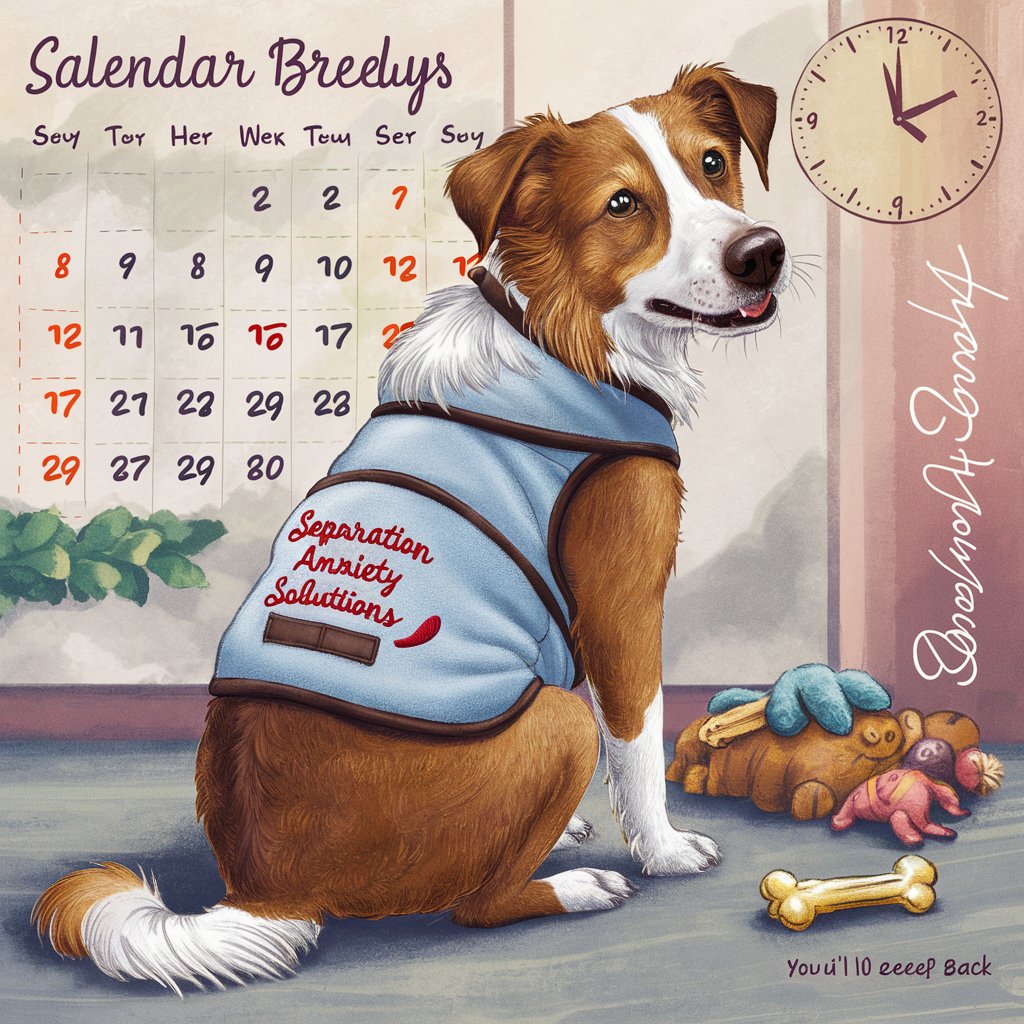Separation anxiety is a common issue among dogs, manifesting as destructive behavior, excessive barking, and other signs of distress when left alone. Helping your dog manage separation anxiety requires consistency, patience, and understanding, combined with effective training techniques. This book provides practical solutions and strategies to help your dog feel safe and secure while you’re away.

Chapter 1: Knowing Separation Anxiety
Understanding the Symptoms:
- Destructive Behavior: Chewing furniture, digging, or scratching at windows and doors.
- Extreme Vocalization: Excessive barking or howling.
- Pacing: Continuous pacing back and forth.
- Accidents: Peeing or defecating in the house despite being housebroken.
- Excessive Drooling or Panting: Occurring without physical exertion.
- Attempt to Escape: Trying to escape from the house or crate.
Noting Triggers:
- Departure Cues: Actions like picking up keys, putting on shoes, or grabbing a bag may trigger anxiety as your dog associates these with your departure.
- Loneliness: Dogs, being social animals, can become anxious and lonely when left alone for extended periods.
Differentiating Boredom from Anxiety:
- Timing of Behavior: Boredom behaviors typically build up over time, while anxiety-related behaviors often start immediately after you leave or shortly thereafter.
Chapter 2: Preparing for Departure
Desensitizing Departure Cues:
- Practice Cues: Occasionally pick up your keys or put on your shoes without leaving to help your dog become desensitized to these cues.
- Brief Departures: Start with short absences and gradually increase the duration to help your dog adjust.
Establishing a Calm Environment:
- Safe Space: Provide a designated area, such as a crate or a quiet room with their bed and toys, to create a sense of security.
- Background Noise: Use calming music, white noise machines, or fans to mask external sounds and create a soothing environment.
Using Calming Aids:
- Pheromone Diffusers: Dog-appealing pheromone diffusers can help create a calming atmosphere.
- Consult Your Vet: Discuss with your veterinarian about medications or supplements designed to reduce anxiety.
Chapter 3: Developing Autonomy
Training for Independence:
- Solo Time: Encourage your dog to spend time alone in a separate room while you’re at home. Gradually increase the duration of these sessions.
- Interactive Toys: Use toys or puzzle feeders to keep your dog mentally engaged and entertained.
Establishing Positive Associations:
- Calm Behavior Rewards: Reward your dog for calm behavior, both when you’re preparing to leave and when they are alone.
- Special Treats: Save special toys or treats for times when you’re away to create a positive association with your absence.
Gradual Absences:
- Short Departures: Begin with brief departures, then gradually extend the time you are away.
- Consistent Schedule: Maintain a regular schedule to help your dog understand when to expect your return.
Chapter 4: While You’re Away
Providing Enrichment:
- Interactive Toys: Offer a variety of interactive toys, such as chew toys, puzzle feeders, or Kongs filled with treats, to keep your dog engaged.
- Food-Dispensing Devices: Use food-dispensing toys to provide mental stimulation and prevent boredom.
Utilizing a Dog Walker/Pet Sitter:
- Daytime Breaks: Arrange for a dog walker or pet sitter to provide companionship and breaks during long absences.
- Doggy Daycare: Consider enrolling your dog in doggy daycare for socialization and activity.
Monitoring Your Dog:
- Pet Cameras: Use pet cameras to observe your dog’s behavior and ensure their safety while you’re away.
- Friend or Neighbor: If possible, have a friend or neighbor check in on your dog during the day.
Chapter 5: Returning Home
Maintaining Calmness:
- Low-Key Greetings: Keep greetings calm and low-key to avoid reinforcing anxious behavior.
- Ignoring Excitement: Wait for your dog to calm down before giving attention or affection.
Reinforcing Good Behavior:
- Reward Calmness: Reward your dog for calm behavior upon your return.
- Consistent Schedule: Stick to a regular leave and return schedule to help your dog predict your comings and goings.
Avoiding Punishment:
- No Chastisement: Do not punish your dog for destructive behavior or accidents related to your absence. Address the underlying anxiety instead.
- Positive Reinforcement: Focus on reward-based training and positive reinforcement to encourage desirable behavior.
Chapter 6: When to Seek Professional Help
Identifying Extreme Anxiety:
- Persistent Fear: If your dog’s anxiety doesn’t improve with management and training, consider consulting a specialist.
- Severe Stress: Signs of extreme stress, such as self-harm or severe destructive behavior, require professional intervention.
Consulting a Veterinarian:
- Medical Issues: Rule out any underlying medical conditions that may be contributing to your dog’s anxiety.
- Medication: Discuss the possibility of anti-anxiety medications or supplements with your vet.
Working with a Behaviorist or Trainer:
- Behavior Modification: Certified dog trainers or behaviorists can provide personalized behavior modification programs and support.
- Specialized Training: Consider enrolling in courses or seminars specifically designed to address separation anxiety.
Conclusion
While separation anxiety can be challenging, with consistency, patience, and the right approach, you can help your dog feel more secure and relaxed when you’re away. By understanding your dog’s needs, creating a calming environment, and employing positive reinforcement techniques, you can alleviate anxiety and foster a sense of well-being. Tailor your approach to your dog’s specific needs and celebrate the progress you both achieve. With dedication and the right strategies, your dog can overcome separation anxiety and lead a happier, more balanced life.

